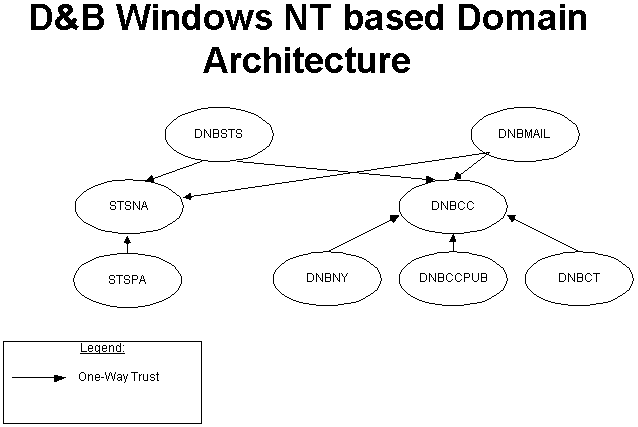
Microsoft Corporation
January 1996
A leader in business information gathering, Dun & Bradstreet understands the need for reliable messaging. Dun & Bradstreet needed a stable e-mail platform that would scale to the entire enterprise. The firm was also looking for a platform that it could use to develop internal applications and automate routine business processes. In its search, Dun & Bradstreet turned to Microsoft, the makers of its current mail system. Dun & Bradstreet chose Microsoft® Exchange Server as its standard e-mail server for the Dun & Bradstreet Corporate and Shared Services centers. Dun & Bradstreet has further recommended Microsoft Exchange Server to its various associated divisions.
Dun & Bradstreet operates in a highly distributed environment and requires that strict security restrictions be enforced among departments. Individual business units require administrative control and restrictive access to divisional resources. These divisions also maintain their own IS departments. Dun & Bradstreet requires its messaging system, therefore, to reflect both its divisional security structure—by providing a secure workgroup environment—and its corporate messaging structure, by providing fast, reliable communications across the entire organization.
Dun & Bradstreet maintains two high-bandwidth token ring local area networks (LANs): one at the Corporate Center and the Shared Services Center. These two LANs are connected via T1 leased lines and are standardized on TCP/IP. The rest of the company is composed of highly distributed, semi-autonomous divisions. Each of these divisions maintains its own network and IS and is often linked to the corporate network by low bandwidth or dial up connections.
Dun & Bradstreet chose to implement a variation of the multimaster Windows NT®–based domain architecture within its corporate network to facilitate the enforcement of its security model (Figure 1). This architecture consists of configuring Dun & Bradstreet's Windows NT–based domains in two tiers. The first tier consists of two master user-account domains: STSNA and DNBCC. STSNA contains the user accounts for the employees located at the Shared Services Center in Pennsylvania. DNBCC contains the user accounts for the employees located at Dun & Bradstreet's Corporate Center in New York and Connecticut. In keeping with Dun & Bradstreet's security requirements, no trust relationships were established between the two user account domains. This prevents user accounts from one domain being validated in the other.

Figure 1. The Dun & Bradstreet domain architecture
The second tier consists of five resource domains. Three of these are regionally defined local resource domains for Pennsylvania, New York, and Connecticut, the other two are public resource domains. STSPA and STSPUB, the local and public resource domains for the Shared Services Division, maintain one-way trust relationships to the STSNA user account domain. This trust relationship allows user accounts defined in the STSNA domain access to the resources defined in the STSPA and STSPUB resource domains. The remaining three resource domains, DNBNY and DNBCT, which are local resource domains, and DNBCCPUB, which is a public resource domain, maintain one-way trust relationships to the DNBCC user account domain, which allows those users at the Corporate Center access to their regional and divisional resources.
This two-tier domain architecture allows user accounts and groups to be created and administered at the corporate level, while access restrictions and permissions to resources can be defined and managed at the divisional and local levels.
Dun & Bradstreet configured two additional resource domains to support its messaging system: the DNBSTS and the DNBMAIL domains. These resource domains differ from the divisional and regional resource domains, in that they maintain one-way trust relationships with both of the user account domains, as well as a two-way trust relationship with each other. These trust relationships allow any user with a valid account in one of the two user account domains access to the messaging system. The two-way trust relationship between the two messaging domains facilitates centralized administration of the messaging system.
Microsoft Exchange sites are similar to Windows NT–based domains, though operating at the messaging layer. They are groups of Microsoft Exchange servers that are administrated as a unit. Site boundaries should be defined according to two criteria: available bandwidth and business infrastructure. Often, these boundaries will coincide with Windows NT–based domain boundaries.
Microsoft Exchange servers within a site require constant network access to all other servers within that site. As such, on-demand dial-up asynchronous or X.25 connectivity is generally insufficient for use as intrasite bandwidth. Dedicated local area network, leased line, or frame relay connectivity of 56 kilobits per second (Kbps) or better is recommended as the minimum acceptable bandwidth within a Microsoft Exchange site.
Dun & Bradstreet chose two primary sites for its initial implementation of Microsoft Exchange. These sites mirror the messaging domains implemented in Windows NT.
Dun & Bradstreet decided to configure its Microsoft Exchange sites to mirror the business structures they will be supporting. Divisional administrators will map future sites and their relative components to their respective business units.
The Dun & Bradstreet Corporate Center will be defined as a single Microsoft Exchange site, called the Dun & Bradstreet Messaging Backbone site (Figure 2).
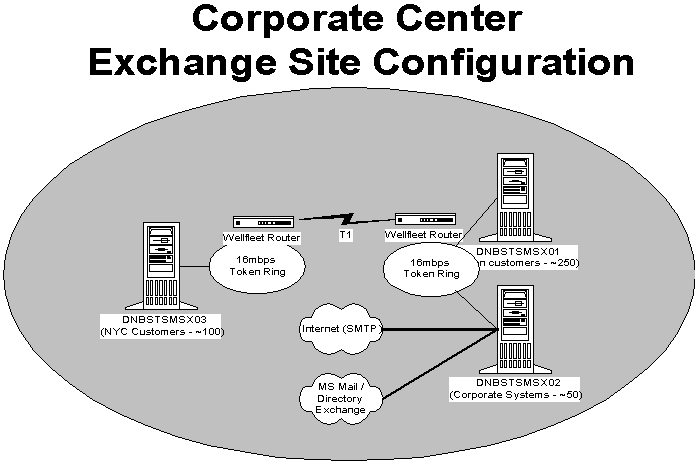
Figure 2. Dun & Bradstreet Messaging Backbone site configuration
The Dun & Bradstreet Messaging Backbone site will consist of three systems running Microsoft Exchange Server: one for customers in the Wilton, CT location (approximately 250-300 associates); one for the New York City locations (total about 100 associates); and one for Corporate Systems (about 50 associates). The Corporate Systems server will also act as a staging area for any necessary updates, patches, and add-ins.
The Corporate Center has ample available bandwidth: the Wilton and Corporate Systems servers will be on the same 16 megabits per second (Mbps) token ring LAN. The New York server will also be on a 16 Mbps token ring LAN. These two LANs will be connected via T1 Wellfleet routers. The narrowest bandwidth between any servers will be 1 Mbps.
Dun & Bradstreet will install a Microsoft Mail Connector and Internet Mail Connector on the Corporate Systems server to provide messaging access to Simple Mail Transfer Protocol (SMTP) mail systems as well as the Dun & Bradstreet legacy Microsoft Mail network.
The Shared Services Center in Allentown, Pennsylvania, will also be its own site, serving an end-user population of approximately 200 users. It will contain a single system running Microsoft Exchange Server with a Microsoft Mail Connector (Figure 3).

Figure 3. Shared Services Center site configuration
Connectors allow sites to exchange message and/or directory and public folder information with each other as well as provide connectivity to other messaging systems, such as X.400 systems (for example, an administration management domain [ADMD] such as AT&T, or an X.400-compliant messaging switch such as DEC All-in-1) and the Internet.
Site connectors can be implemented only when one of the following criteria are met:
In the case of the Corporate Center and Dun & Bradstreet Messaging Backbone sites, all servers will be backup domain controllers in the STSNA Windows NT domain; therefore, a site connector will be used between them.
Dun & Bradstreet will use this architecture as a blueprint for future business units containing multiple sites for the following reasons:
Unlike X.400 connectors, which employ point-to-point server connectivity, site connectors allow for many-to-many or many-to-one messaging connections. This provides for faster message transfer and lessens any single point of failure issues. Site connectors can be configured either in a complete mesh (many-to-many) architecture or to a single "target server" as shown in Figure 4.
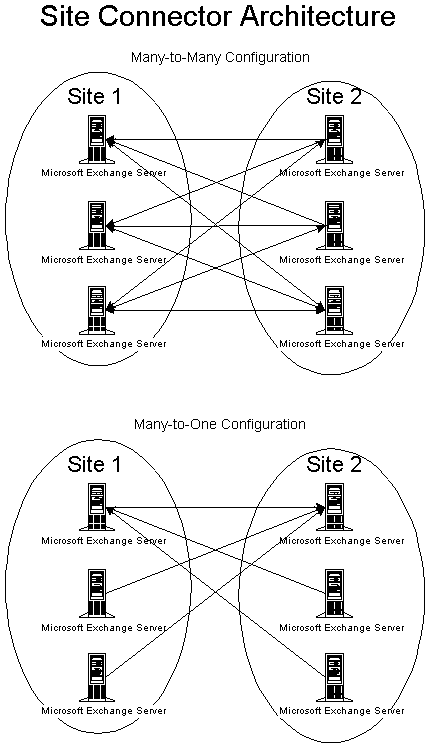
Figure 4. Site connector configurations
Dun & Bradstreet will use X.400 connectors as its primary connection between Dun & Bradstreet business divisions, because there are no Windows NT domain trust requirements. This provides global messaging without compromising the security of the business division.
An important distinction of X.400 connectors is that they provide point-to-point connectivity between sites. That is, a single server in each site, termed the bridgehead server, acts as the conduit for all messages traveling over the connector (Figure 5). This eases troubleshooting and monitoring, but it does implement a single point of failure for message transfer. Microsoft Exchange, however, does allow for the definition of multiple connectors, and will automatically implement least-cost and fault-tolerant routing.
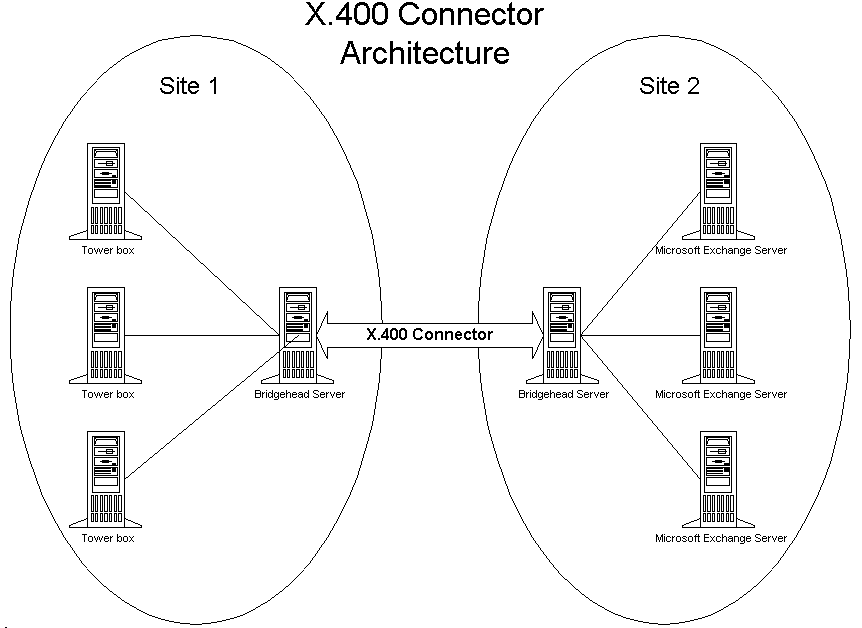
Figure 5. Connector architecture
X.400 connectors can perform message conversion into a "pure" X.400 format, but this is only necessary when connecting to another, non-Exchange-based, X.400 system. When using X.400 connectors to connect Microsoft Exchange sites, the administrator will configure the connector not to perform this conversion, but maintain the default MDBEF format. The X.400 connector will then simply encapsulate the message in an X.400 wrapper for delivery.
While X.400 connectors provide the broadest level of connectivity, they do not offer the same level of performance as site connectors; as such, whenever the necessary Windows NT–based domain architecture can be leveraged, site connectors are preferable.
The Microsoft Exchange Internet Mail Connector offers a high-fidelity connection to a mail system that supports the SMTP and/or Multipurpose Internet Mail Extensions (MIME) standards. Additionally, the Internet connector can be used to backbone to another Microsoft Exchange messaging system. Microsoft Exchange messages sent from a Microsoft Exchange server over the Internet connector to another Microsoft Exchange server retain all Microsoft Exchange–specific formatting, including rich text formatting, OLE objects and attachments, and digital sign and seal security.
Dun & Bradstreet has chosen to implement an Internet Mail Connector at the Corporate Center for both its use as well as that of the Shared Services Center. This connector will provide an improved level of Internet connectivity for the Shared Services Center without increasing its administrative load. It will create only a minimal increase in administration for the Corporate Center.
The Microsoft Mail Connector is a high-fidelity gateway between Microsoft Exchange and Microsoft Mail. Aside from messaging connectivity, the Microsoft Mail Connector also supports automated directory exchange between the two platforms.
Dun & Bradstreet will implement Microsoft Mail Connectors in both the Corporate Center and the Shared Services Center sites; however, only the Corporate Center site will implement Directory Exchange. This will minimize administrative overhead while providing a high-speed messaging link between Shared Services Center–based Microsoft Exchange users and Shared Services Center–based Microsoft Mail applications. When Dun & Bradstreet ports the Microsoft Mail–based applications to Microsoft Exchange (planned for 1996), the Microsoft Mail Connector at the Shared Services Center can be removed.
Dun & Bradstreet will handle all Microsoft Mail directory exchange for both the Corporate Center and the Shared Services Center through the connection implemented at the Corporate Center. Dun & Bradstreet also intends to use this model as a blueprint for Dun & Bradstreet divisions. The divisional headquarters can then leverage its systems running Microsoft Exchange Server to implement directory exchange, thereby alleviating the administrative burdens related to maintaining Microsoft Mail directories. This implementation will also decrease the number of Microsoft Mail post offices currently in directory synchronization (more than 250), making the Microsoft Mail network more efficient.
The Microsoft Schedule+ free/busy gateway is a component of the Microsoft Mail Connector that exchanges information between Microsoft Schedule+ version 1.0 users and Microsoft Schedule+ 7.0 users. Dun & Bradstreet will implement this component at both the Corporate Center and the Shared Services Center to facilitate coexistence with current Microsoft Mail users.
This section describes how Dun & Bradstreet configured its Microsoft Exchange Servers at the Corporate Center and the Shared Service Center, and how the firm intends to configure its divisional servers.
The selected hardware platforms for Microsoft Exchange Servers are listed in Tables 1 and 2.
Table 1. Hardware Platform for Large Servers (150+ Mailboxes)
| Make/Model | Compaq ProLiant 4x000 or XL-class server |
| CPUs | 2 Pentium processors |
| RAM | 128 megabytes (MB) |
| Disk Space | 8 GB |
| RAID | Level 5 |
Table 2. Hardware Platform for Small Servers (up to 150 Mailboxes)
| Make/Model | Compaq ProLiant 4x000 or XL-class server |
| CPUs | 1 Pentium processor |
| RAM | 64 MB |
| Disk Space | 4 GB |
| RAID | Level 5 |
Dun & Bradstreet has implemented the disk configuration in Figure 6.
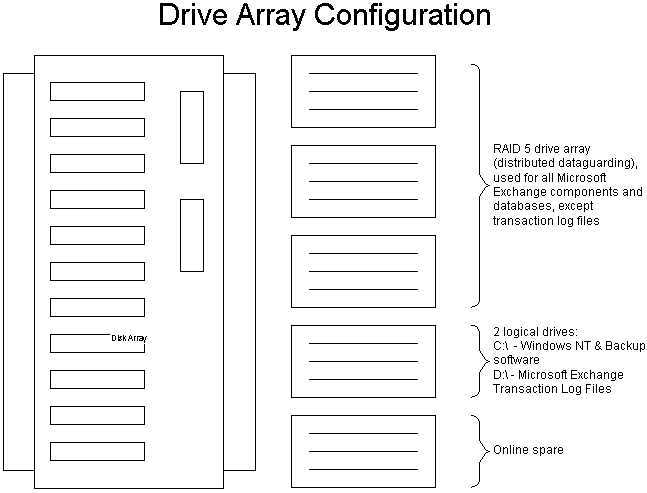
Figure 6. Drive array configuration
Dun & Bradstreet used the same configuration for both large and small servers. Drive sizes for the small servers were 2.1 GB (for a total of 10 GB, including online spare), and 4.3 GB for the large servers for a total of 20 GB (including online spare). Running the Microsoft Exchange Performance Wizard after Microsoft Exchange Server setup (and before installing user mailboxes) can help to determine and resolve any other tuning issues.
Dun & Bradstreet will install the following software on each of its messaging servers:
Note The Microsoft Exchange client (Win16) will be the standard messaging client implemented at Dun & Bradstreet.
Dun & Bradstreet will be implementing Microsoft Exchange Public Folders to increase collaborative productivity within its organization. Dun & Bradstreet decided to implement a divisional public folder tree strategy. This strategy has the benefit of mirroring Dun & Bradstreet's business model as well as allowing individual departments to manage their own Public Folder resources.
In this strategy, Dun & Bradstreet will create a top-level folder for each division, assigning a divisional administrator to each. Only the divisional administrator will have owner permissions on this folder, all other users will have read-only permissions. The divisional administrator will then create sub-folders on a per departmental basis identifying, training, and giving departmental administrators owner permissions on these subfolders. The departmental administrator will then create and manage all folders contained within a department.
This strategy allows Divisional and Departmental managers, who are more knowledgeable about business content and processes, to administer the Public Folders they are using. Figure 7 details this strategy.
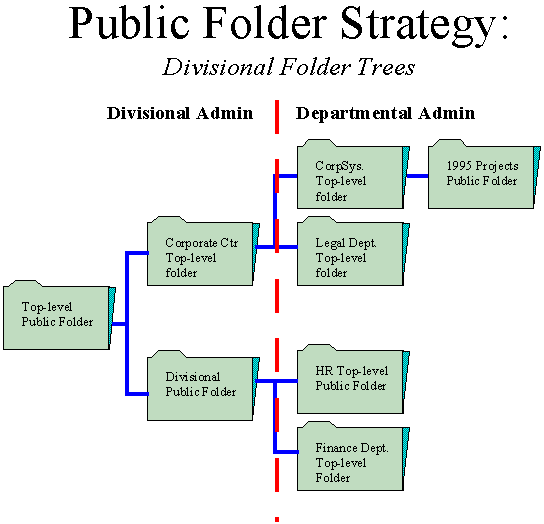
Figure 7. Divisional folder tree strategy
When a public folder needs to be replicated to another server or site, the departmental administrator will notify the divisional administrator, who will then replicate the folder to the target server.
Public folder replication in Microsoft Exchange operates under a different engine than directory replication. Public folders are replicated folder by folder and may extend to every Microsoft Exchange server in the enterprise or to only one server in a particular site. In general, public folders can be grouped into the types listed in Table 3. Along with each type is Dun & Bradstreet's recommendation for replication frequency.
Table 3. Folder Types and Replication Frequencies
| Folder Type | Folder Description | Replication Frequency |
| Discussion Folder | threaded conversations | once per hour |
| Document Library | documentation for perusal | once per day |
| Document Library | documentation for update | once every four hours |
| Archive folder | archived discussions / DL threads | once per week |
| Broadcast folder | for company-wide publications | once per week/month |
Microsoft Exchange Directory Replication implements along an event-driven, object-specific, multiple-master model. This means that if any attribute on any object in the Microsoft Exchange Directory on any Microsoft Exchange Server changes, it will replicate that change to all the other Microsoft Exchange Servers it is configured to replicate with. While Directory Replication is configurable between sites, it is automatic within sites. This means that any change in one server's directory will be automatically replicated to all the other servers in that site and, subject to configuration, in other sites. Microsoft Exchange, however, is designed not to place an inordinate amount of load on network resources. Being event driven also means that if nothing changes, nothing is replicated. When replication does take place, Microsoft Exchange will adapt dynamically to changes in the network environment so as not to interfere with user traffic. Within sites, Microsoft Exchange will use remote procedure call (RPC) communication to replicate the information, while between sites it will use messaging.
Dun & Bradstreet has chosen several naming conventions to serve as guidelines in its deployment of Microsoft Exchange. These conventions will facilitate administration, as well as customer use, by allowing users and administrators to easily identify objects in their Microsoft Exchange Organization.
Microsoft Exchange allows for the use of both a directory name and a display name. The directory name is the "real" name that Microsoft Exchange uses to identify and distinguish various elements of itself: this name is set at configuration and cannot be changed. The directory name is also used by the proxy generator to create proxy addresses. The display name, or "friendly" name, is the one that shows up in the address book for everyone to see. The administrator can change this name as needed.
The Organization is the top-level container in an installation of Microsoft Exchange. Administrators must assign this name to all Microsoft Exchange sites and servers within the scope of their installation to ensure proper operation of messaging connectivity, as well as directory and public folder replication.
Dun & Bradstreet will use The Dun & Bradstreet Corporation as the Organization display name for all Microsoft Exchange Server implementations. This display name will be matched exactly, including case sensitivity, in all sites.
In order to maintain brief and easily recognized X.400 and SMTP proxy addresses, Dun & Bradstreet administrators will use DNB as the Organization directory name.
Table 4 gives the display name, as well as the proxy addresses, generated by Microsoft Exchange:
Table 4. Organization Display Name and Proxy Addresses
| Organization display name | Proxy addresses | |
| The Dun & Bradstreet Corporation | SMTP Domain Name | dnb.com |
| X.400 PRMD | DNB | |
Each site must have a site directory name that is unique within the Organization. As with the Organization, Microsoft Exchange will use these site directory names to generate proxy address names that map to the X.400 organization code, SMTP subdomain name, and to the Microsoft Mail network name.
Dun & Bradstreet site directory names will adhere to the following guidelines:
Dun & Bradstreet will define site display names according to the following guidelines:
These are some examples of valid Dun & Bradstreet site display names:
Dun & Bradstreet will be using the first initial of the user's first name, followed by the user's last name as the standard mailbox directory name. Thus, the standard used will be DSmith, where "D" is the first initial of the first name and "Smith" is the last name. Administrators will resolve duplicates via a middle initial or counter (e.g., DPSmith or DSmith1).
Dun & Bradstreet will continue to use its current Microsoft Mail mailbox display name standard, which adheres to the following format: Lastname, Firstname Middle Initial.
Where possible, Dun & Bradstreet will use the same naming conventions with custom recipients for external X.400, SMTP, or other gateway mailboxes as it does for internal mailboxes. The only exception, is that Dun & Bradstreet will append the address type to the display name, as in Table 5.
Table 5. Custom Recipient Display Names
| Borm, Paul (Internet) | Forgrave, Bob (X.400) |
| Fine, Suzan (MHS) | Gersich, Christy (PROFS) |
Administrators will assign display names to public folders that clearly define both their purpose and the scope of their use. Dun & Bradstreet folder names will follow these guidelines:
These are some examples of Dun & Bradstreet public folder display names:
Dun & Bradstreet will define four recipient containers in each site as shown in Table 6.
Table 6. Standard Container Names
| Container Name | Container Role |
| Exchange Recipients | All Exchange users in the site |
| Microsoft Mail Recipients | All Microsoft Mail recipients (via the Microsoft Mail Connector/DXA) |
| Exchange Distribution Lists | All Exchange Distribution Lists (DLs) |
| Private Recipients | All Exchange users and DLs not to be shared with other sites |
Dun & Bradstreet considers proper standardization and enforcement of a Distribution List (DL) strategy to be crucial when implementing Microsoft Exchange across its enterprise. Without such a strategy, individual departments would create a large number of poorly organized distribution lists resulting in unnecessary message traffic. Table 7 details different kinds of distribution lists defined by Dun & Bradstreet and when they will be replicated within the Organization.
Table 7. Distribution Lists: Replication Scope
| DL name | Type/purpose | Replication scope |
| Corporate System Associates | Departmental DL | Within site only |
| Divisional CFOs | Multidivisional DL | All sites |
| Nielsen/IMS Developers | Interdivisional DL | Only to affected divisions |
| CEO's Direct Reports | Department DL | Within site only with Delivery Restriction |
Dun & Bradstreet will use highly descriptive display names, linked to department-, division- or enterprise-wide purpose, to describe its distribution lists. For example:
Distribution lists in Microsoft Exchange can be nested (that is, a DL can itself be a member of another DL). Dun & Bradstreet will use this feature to facilitate administration. Figure 8 demonstrates how Dun & Bradstreet will nest its distribution lists:

Figure 8. Distribution list nesting
Dun & Bradstreet will use several features in Microsoft Exchange designed to facilitate administration.
Dun & Bradstreet will schedule full online backups of the directory service and the information store every night, using the Windows NT backup software with the Microsoft Exchange extensions.
Each weekend, the Microsoft Exchange Server services will be stopped and the directory service and information store database files will be copied to a backup directory on the server. This will be done via an automated batch file triggered by the Windows NT AT command scheduler service.
Note The use of scheduled shutdowns is a voluntary precaution on the part of Dun & Bradstreet, based on internal liability issues. Microsoft Exchange Server is designed to support 24-hour operations, seven days a week.
The Microsoft Exchange Administrator program will monitor all Microsoft Exchange servers using the Microsoft Exchange Server monitoring function. These monitors will trigger both Windows NT and mail message alerts if any Microsoft Exchange service stops running.
Microsoft Exchange represents a major step forward in messaging and scheduling technology. As such, Dun & Bradstreet will need to familiarize its associates with the new Microsoft Exchange user interfaces and functionality. Dun & Bradstreet will use the four following techniques to accomplish this.
Dun & Bradstreet will invite all its associates to weekly training classes. These classes will focus solely on basic messaging and scheduling functionality.
Messaging Functionality:
Scheduling Functionality:
Dun & Bradstreet will develop User Guides for both Exchange and Schedule+ and distribute them at training classes. Dun & Bradstreet also plans to include "quick tip" sheets for commonly used functions in this documentation.
Dun & Bradstreet will provide a Getting Started Public Folder to all users. This will be a modified version of the sample Getting Started folder that ships with Microsoft Exchange.
Dun & Bradstreet currently uses Microsoft Mail for PC Networks, configured in the standard hub and spoke model, to provide its messaging. Dun & Bradstreet plans to use the Microsoft Exchange–Microsoft Mail migration tool to migrate users' existing Microsoft Mail mailboxes to Microsoft Exchange Server.
Migrations will occur on Friday evenings to ensure that Microsoft Mail directory synchronization completes successfully and that customer addresses are properly represented in the Global Address List.
Dun & Bradstreet has allocated a 50-MB limit on disk space for its customers' mailboxes on the Microsoft Exchange Servers. Customers, therefore, will need to reduce, prior to migration, mail message files (MMFs) greater than 50 MB.
Dun & Bradstreet plans to migrate its initial implementation in four stages:
Pilot Group 1 will migrate first. This group consists of Corporate Systems associates beta testing version 3.51 of the MIS Workstation. This is a group of approximately 15 to 20 associates.
Pilot Group 2 will migrate next, incorporating the remaining associates in Corporate Systems and the Corporate Communications department, a total of approximately 10 associates. This group will be running the beta 2 version of the MIS Workstation 3.51.
Dun & Bradstreet plans to migrate the remaining Corporate Center and Shared Services customers at the rate of approximately 20 per night. Dun & Bradstreet will develop and verify a rollout schedule with customers prior to commencement.
Dun & Bradstreet plans to maintain the legacy Microsoft Mail post offices in a disconnected state for one month following completion of each migration. In the event of failure, customers can use the Microsoft Mail provider to connect to their old mailbox for basic messaging functionality. Dun & Bradstreet administrators will instruct customers in how to install the Microsoft Mail provider.
Dun & Bradstreet plans to establish the Dun & Bradstreet Messaging Backbone site as a "routing clearing-house" for all interdivisional messages. This will allow the Dun & Bradstreet Data Services group to centrally manage the Dun & Bradstreet messaging infrastructure. Additionally, this central site architecture will allow each Dun & Bradstreet division to establish a single connector through which they can communicate with the rest of Dun & Bradstreet.
The three top-level routing post offices (DBCORP/DNBHUB, DBCORP/DNBHUB1, and DBCORP/DNBHUB2) will be migrated to Microsoft Exchange Servers. Each will run the Microsoft Mail Connector, using a Microsoft Mail proxy address of DBCORP/DNBHUB. This will require that the routing tables on divisional hub post offices be updated to reflect all other divisional post offices as indirect via DBCORP/DNBHUB. Each of the three Microsoft Exchange Servers will run at least one instance of the Microsoft Mail Connector External program, as shown in Figure 9.
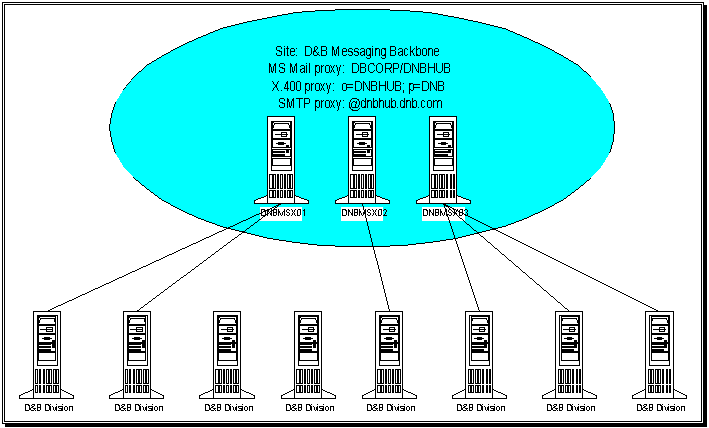
Figure 9. Phase one backbone architecture
A divisional hub of post office servers will route mail through the central site. As Dun & Bradstreet divisions migrate to Microsoft Exchange, these divisional hub post offices will become Microsoft Exchange Servers, and the Microsoft Mail Connector will be replaced with an X.400 connector.
All X.400 connectors to or from the central messaging site will use the Transmission Control Protocol/Internet Protocol (TCP/IP) transport stack because the Dun & Bradstreet Wide Area Network (WAN) passes only TCP/IP network traffic.
Dun & Bradstreet will establish a Windows NT Remote Access Server (RAS) in the DNBMAIL domain. The firm will also configure X.400 connectors over RAS to and from each Divisional top-level site. By setting the "cost" of each of these connectors to 100, Dun & Bradstreet can configure these connectors not to be used unless the primary TCP/IP-based, X.400 connector (cost of 1) goes down. This configuration provides an out-of-bandwidth solution for continuing messaging traffic in case of a WAN outage.
Dun & Bradstreet has provided the following recommendations to assist its divisions in successfully configuring Microsoft Exchange Server sites.
For those networks that consist of a large number of small, distributed offices connected by slow bandwidth links ranging from 56 Kbps leased lines to 14.4 Kbps asynchronous dial-up connections, determining the best site configurations becomes a critical issue. In general, the fewer sites, the better; however, slow bandwidth and the highly distributed nature of the WAN often make it impossible to implement a single site.
In all cases, Dun & Bradstreet recommends the creation of a top-level divisional/regional site. This site should exist wherever the WAN connectivity back to the central Dun & Bradstreet Messaging Backbone site exists.
Dun & Bradstreet further recommends the following:
In situations where bandwidth is relatively plentiful (T1 speeds or better), Dun & Bradstreet recommends the creation of a single site. If recipients' addresses need to be segmented, Dun & Bradstreet recommends the creation of separate recipient containers.
In the light of Dun & Bradstreet's real estate consolidation efforts, there are many offices with multiple on-site divisions. In cases such as this, Dun & Bradstreet recommends one site be created with multiple recipient containers, one per division.
This implementation and migration strategy, designed by Dun & Bradstreet, serves as one example of how large organizations can leverage the strengths of Microsoft Exchange Server. Microsoft Exchange Server excelled in this distributed and departmentally segregated environment, adhering to and enforcing the strict security model required by the Dun & Bradstreet business environment, while providing reliable communications across the organization. This deployment also serves to illustrate the strength of Microsoft Exchange with respect to its ability to seamlessly coexist with, and migrate from, Microsoft Mail. As its migration continues to move forward, Dun & Bradstreet intends to reap additional benefits of Microsoft Exchange Server, specifically in lower administrative overhead, robust Internet connectivity and public folder support.